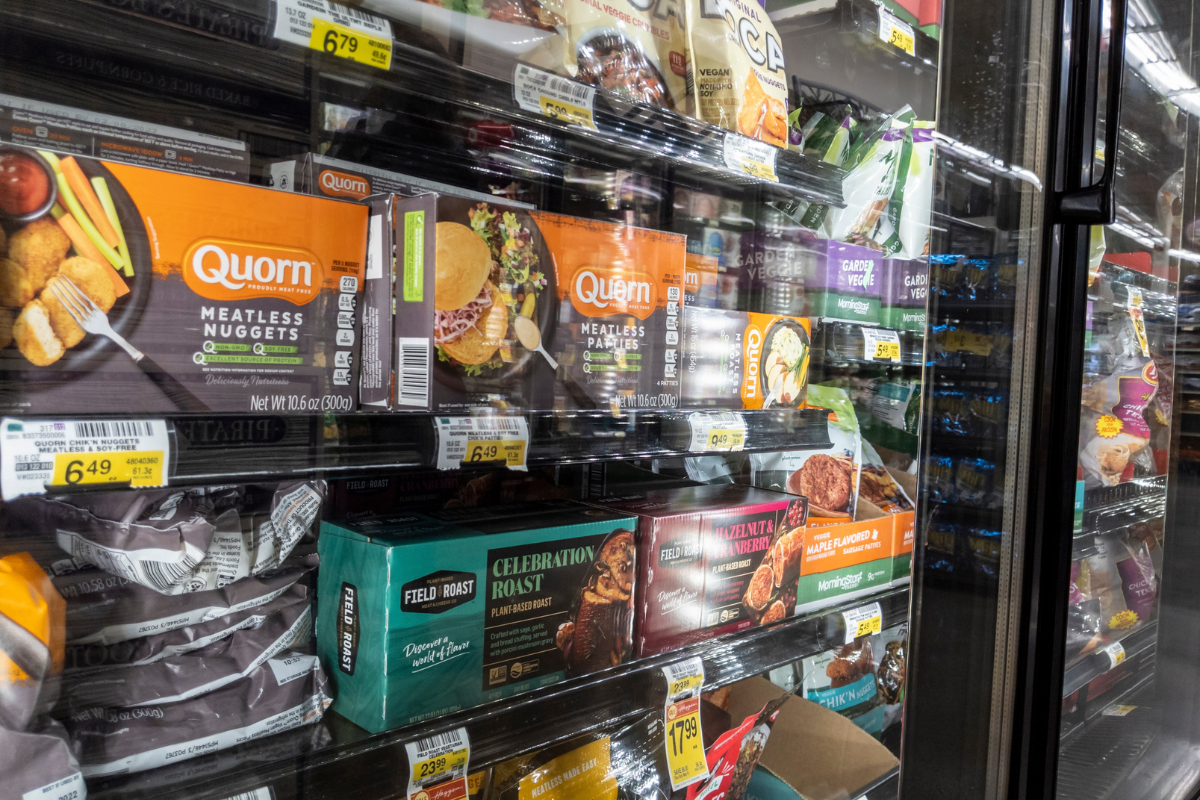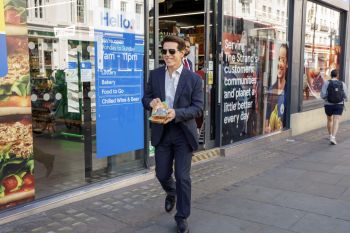
4 Vital Steps for a Successful Plant-Based Retail Rollout
US retail sales of plant-based foods alone grew by 6.2% in early 2021, reaching a total market value of $7.4 billion. 2 years on, reports that overall retail sales in plant-based have slowed.
Brands now face new challenges, including increased competition from competitors and retailers alike, who have heavily increased production of own-label products. These challenges have placed extra pressure on retail rollouts to be successful. But what dictates a company’s ability to make a splash in a demanding marketplace?
Read on to find out.
Step 1: Brand identity is everything
A genuine commitment to sustainability and equitable food security are the driving forces behind many independent plant-based brands. Unlike other markets, which are often driven by strategic gap-filling, plant-based manufacturers appear to be frequently motivated–and defined–by their founders’ personal ethics and dietary habits.
These deeply personal investments create a unique value proposition in the plant-based retail space, forming the foundations of a brand identity that will resonate with like-minded consumers. This will prove vital to the success of any retail rollout, as consumers have been found to form an opinion about a brand within just 0.05 seconds, which will impact whether they chose to buy or not.
Studies have shown that the chief motivations for consumers choosing plant-based products include animal welfare, personal health and well-being, and environmental stewardship. Any brands that seek to position themselves alongside the same concerns should be able to foster long standing relationships with said buyers.
Case study: Heura Foods.
Founded in 2017, Heura Foods is a Barcelona-based company that has been clear about its mission from day one. The founders, Marc Coloma and Bernat Ananos Martinez, call themselves “agents of change” and seek to create a more sustainable and healthy food system. They draw consumers in by inviting them to become “good rebels” and to join in the fight against meat and dairy-centric nutrition.
Combined with vibrant and cheerful branding and well-conceived product launches, Heura is now thought to be the fastest-growing plant-based operation in Europe.
Step 2: Planning and promotion must be unique
To launch in the plant-based market, thorough planning is essential, but remember that no universal rollout methodology will guarantee visibility and success.
Leveraging accessible and cost-effective consumer insight tools–including Google Analytics and Google Trends–provides valuable information about target consumers and should be utilized early, to shape promotion strategies. This is important as around 65% of a company’s business comes from repeat customers, so gaining insight into what they are looking for and bagging that first purchase could lead to lasting brand loyalty.
The uniqueness of a company is a valuable tool for standing out from competitors and should provide a jumping off point for campaign development. On the flip side, emulating strategies used by others in the sector will likely draw comparisons, which is inadvisable. This is especially pertinent for independents when looking for inspiration at major players, such as Beyond Meat and Impossible Foods.
Engaging promotions, strategically aligned with key calendar dates and supported by effective marketing content, are still considered a recipe for brand awareness success. Playing to the individuality of a company will only further enhance this.
Case study: THIS Isn’t Streaky Bacon
UK plant-based manufacturer THIS chose to unveil its streaky bacon analogue in December 2022, creating buzz ahead of Veganuary 2023. It launched into almost 3,000 supermarkets across the country and was squarely aimed at existing plant-based eaters, flexitarians, Veganuary participants, and vegan bacon naysayers.
The launch was supported by in-store promotions and tongue-in-cheek social posts that tied in with the brand’s wider image. Earlier in the year, THIS released a limited edition bacon-scented perfume, just in time for Valentine’s Day. The stunt saw the fragrance sell out in just 20 minutes and raise the profile of its existing bacon products.
Step 3: Launching online, in-store or both?
Choosing the right launch strategy can make or break a market debut, which means thinking carefully about where to sell products.
For many new plant-based brands, a 100% online retailer offers an ideal platform to gain recognition, test products, and gather feedback. This differs from D2C as online retailers already have the infrastructure to market products and provide sales data, without further investment. In addition, setting up an effective logistics chain can prove costly and difficult for challenger brands that are not experienced in the delivery of products straight to consumers.
Alternatively, brands might look at launching in-store and finding dependable distribution partners. This is crucial to securing a spot in the market, but it is not always easy. Even when a notable partner is confirmed, it offers no guarantee that others will follow nor that the products being supplied will be given good visibility. Responsiveness, flexibility, reliability, and a strong focus on quality control are sought after characteristics of any distribution partner.
A third option is to launch unilaterally; however, this can be costly and requires exemplary organization, including careful stock control and allocation. Launch strategies depend greatly on a brand’s goals, the types of products being manufactured (affecting hope they need to be stored), and budget.
Case study: One Planet Pizza
“When looking for a dependable distributor, lean into your network and your community. Some of our best partnerships have come through word-of-mouth, often a recommendation from another founder over LinkedIn,” Joe Hill, co-founder of One Planet Pizza says. “Let your community know you’re looking and make it very clear what it is you hope to achieve and what type of partner would help you do this.”
Hill is currently trying to interest Waitrose in becoming a distributor, to follow in Asda’s footsteps.
Step 4: Create buy-in from consumers
While becoming increasingly competitive, the plant-based market remains dominated by established brands. This means that challengers must differentiate themselves and carve their own niches to create a loyal customer base or ‘consumer buy-in’.
Alongside an established brand identity, factors such as taste, texture, appearance, affordability, a wide product portfolio, and prepared meals can create consumer buy-in. Companies can align their releases by identifying what consumers want (convenience plus easy access to healthier food choices that will work with their budgets). Once customers feel connected to a brand, they will likely buy into new releases. Data supports this, with findings claiming that 43% of consumers will spend more when they feel loyal to a manufacturer.
Case study: Impossible Foods
Impossible Foods has revealed that it has reduced its wholesale prices by 15%, in order to remain competitive in the market and to be an appealing option to consumers. The move proves that even the major players are not able to rest on their laurels or their 2020 sales booms.
The plant-based food sector is expected to reach over $162 billion in value, by 2030. With such growth will come increased competition for shelf space and visibility. Both established and challenger brands will need to double-down on their unique selling points and tailored consumer engagement to claim market share.


